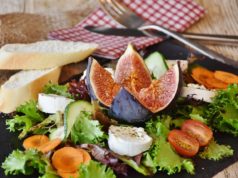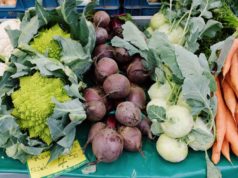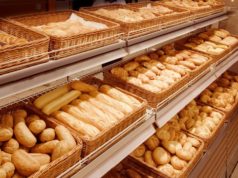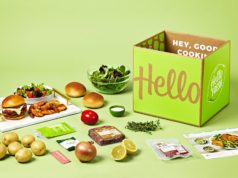As a student, you can count on one hand the number of hours you have left to spend freely after studying, social interactions, classes, extracurricular activities, and exams. So when are you supposed to find the time to eat a proper diet?
Unfortunately for you, going without the right nutrition during exam week can lead to an accumulation of negative consequences. Your immune system, already compromised by stress, is at risk for infection from even the slightest germ invasion.
Poor nutrition, coupled with anxiety, often leads to mood disorders like depression, tense muscles, insomnia, and a whole list of other physical side effects. And with the physical, mental, and emotional demands of exam week, you’ll need to prime your body with the fuel it needs.
Otherwise, your grades will end up reflecting the state of your bad health. The good news is you have a solution: this helpful guide that will outline the perfect diet students need during a period of exam stress.
Want to know a quick and easy way to select the best food options when you’re on-the-go or in the school cafeteria? Look no further than the choices shown below.
For Breakfast…
Doctors and health experts alike have been touting the benefits of breakfast for years. Don’t skip it! Although you would probably rather get an extra ten minutes of sleep instead, eating within an hour from when you first wake up jump starts your metabolism and prepares your mind and body for the morning ahead of you. Especially during times of intense stress, your body will thank you for providing it with the sustenance it craves.
Do yourself a favor and choose higher proteins, quality fats, and complex or whole grain carbohydrates to keep you going strong and energized for the rest of your day. Running late or low on time? Check out these options:
- Whole grain breakfast cereal bar with juice
- Low sugar, all-natural protein bar—great for athletes!
- Instant oatmeal with fruit and almonds
- Low sugar Greek yogurt, topped with berries and nuts
- Hard boiled eggs, string cheese, and an apple
- Breakfast smoothie: just combine fruit, yogurt, and milk or juice in a blender. Add chia or flax seeds for extra fiber, and include green leafy vegetables for a boost in vitamins!
While there are plenty of standout choices available, it can also be easy for you to turn to the more pleasurable foods on the breakfast menu. When in doubt, steer clear from foods that are highly refined and full of carbohydrates, processed with several unknown ingredients, and containing excess sugar, preservatives, and artificial colors or flavors. These are red flags for foods that lack sufficient vitamins, minerals, fiber, and macro nutrients. If consumed, you’re likely to experience brain fog, sluggishness or fatigue, a delayed energy crash, and you may still end up being hungry because your body never got properly fueled!
What to avoid:
- Pancakes and maple syrup
- Belgian or traditional waffles
- Biscuits and gravy
- Highly processed cereals
- Leftover pizza or pasta
- Energy drinks and junk food
For Lunch…
Lunch is something you can’t always guarantee. You might be tied up in class, nose-deep in textbooks, or cramming for an upcoming exam. Life as a student generally dictates that your time is little and precious, so it’s even more crucial to carve out space in the middle of the day so you can eat for long-lastingenergy. Whether you stop at a local fast food place for a quick lunch, or you take time in your school’s dining hall, these simple choices will keep you full and energized for the rest of your day.
- Cooked or raw vegetables
- Fruit salad
- Grilled chicken
- Tuna fish mixed with avocado
- Sliced deli meat and cheese rollups in a whole wheat tortilla
- Sandwiches on whole grain bread
- Vegetable and meat stir fry—go heavy on the veggies and lean on sauce!
As much as you’d appreciate a mid-day nap, you cannot always afford the time or convenience when you have other activities filling up your schedule. Therefore, it’s important to be smart when deciding the food for your lunch. This is the time of day when your body can use carbohydrates efficiently, but try to search for complex ones that contain vitamins and minerals. Stay away from excessively fatty and sugar-laden foods, since those will cause fatigue that will have you dreaming of naptime.
What to avoid:
- Heavy, creamy soups
- Salads with a lot of creamy or sugar-filled dressing
- Anything on the pizza bar
- White, refined breads or rolls
- Processed and fatty meats, like bacon
- Ice cream, cookies, and other high-sugar desserts
For Dinner…
Dinner involves much of the same nutrition that you want for lunch. An appropriate balance of protein, carbohydrates, and quality fats will be your best bet in the evening. However, if you’re planning for an all-nighter study session or want to prepare your body for an intense day tomorrow, it will do you well to limit your carbohydrates, sugars, processed foods, and unhealthy fats. Your focus will be increased with consumption of higher protein, and good fats keep you satiated longer—which means less binging on snacks during the night! Take a look at these ideal dinner foods:
- Chicken, steak, beef, pork, seafood, or tofu
- Whole grain pasta
- Fresh salads with plenty of green vegetables
- Roasted brussel sprouts, broccoli, sweet potatoes, asparagus, and other veggies
- Dressings and sauces made from olive oil, avocado, or yogurt
- Legumes—kidney beans, chickpeas, lima beans, etc.
- Brown rice, wild rice, and quinoa
Even the healthiest dinner sources can sneak in hydrogenated oils, processed gains, artificial flavors, and other unsavory ingredients. These foods not only have poor ingredients, but they also contain little or none essential macronutrients, vitamins, minerals, and fiber. It’s always encouraged for you to cook your own meals, but for the times you can’t—or don’t know how to cook—here’s a rule of thumb: keep your sugars low and eat as many whole foods as possible.
What to avoid:
- Packaged desserts, snacks, crackers, and chips
- Traditional white bread and pasta
- Fruit juices—they’re high in sugar!
- Pre-made and boxed pancake mix, biscuit mix, dessert mix, etc.
- Low-fat milk, cheese, and yogurt
- Energy drinks and specialty coffee beverages
Let’s Talk About Snacks!
Sometimes, certain events in your day can cause you to skip a meal. Studying. Sports. Family. Work. Naps. Exam week creates a new set of priorities for students, and that can mean food comes last. If this is the case for you, all you need to do is keep a variety of snacks at your disposal. Nuts and seeds are by far the most convenient since you can control portion sizes and eat them without refrigerating, but any of these choices are great for a boost in nutrition and energy. Combine a few of them to substitute for a perfect, on-the-go meal.
- Cheese sealed in wax—it won’t spoil, even in warm temperatures
- Pumpkin or sunflower seeds
- Pistachios, cashews, almonds, walnuts, pistachios, and other nuts
- Trail mix
- Individual cups or squeezable tubes of yogurt
- Fresh or dried fruit
- Raw, cut-up carrots, bell peppers, cucumbers, and other veggies
- Whole grain crackers with peanut butter
- Fruit or vegetable smoothies
- High fiber protein or cereal bars
Key Highlights
When exam week approaches and stress kicks in, it can be difficult for students to follow the perfect diet. You might have a million activities to do in the span of a day, but at least you can make healthy choices about which foods to eat. While a balanced diet of protein, fats, and carbohydrates is best, certain food combinations may work better for your individual body and situation.
Quality ingredients, such as lean protein, unprocessed oils, and complex carbohydrates are sure to be the winning formula for optimal nutrition, prolonged energy, and increased focus—just what students need to overcome a period of exam stress.











